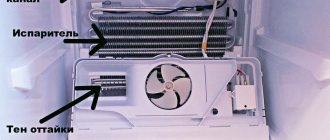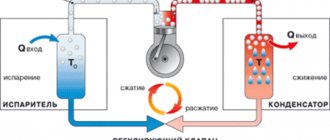It’s easier and healthier to buy fresh, chilled or live fish, rather than frozen, which will then have to be thawed. But this is not always and not available to everyone - sales of a number of types of live fish are often seasonal, and chilled fish is almost never available on the shelves of small towns remote from regional capitals. So you have to choose from what is on sale. Often this “something” looks more like a log or a stone - the carcass is so densely covered with a layer of ice. Therefore, the skill of the housewife comes to the fore: can she cook a delicious dish for her family from this block of ice?
To avoid getting into trouble, right at the store counter you need to think and calculate what size carcass you will need. It’s one thing if you’re planning a celebration with invited guests, another thing is an ordinary family dinner for three or four people. In the first case, you can take larger fish, in the second - either a small specimen or steaks, since it will not be possible to cut off the excess from a large carcass while it is frozen. Thawed fish cannot be re-frozen.
Proper cooking begins with proper thawing. And the most suitable method for this is gradual, slow defrosting. It is better if it is produced in the refrigerator, where the negative impact of temperature on tender fish meat will be minimized.
But when you don’t have time, you can use faster methods - for example, in water or using a microwave, oven or double boiler. If you defrost according to the rules recommended by experts in the field of culinary or fish processing industry, the result will not be long in coming: the fish will turn out to be quite edible, moderately juicy and tender.
The role of frozen foods in our lives ⇑
Freezing is one of the oldest methods of long-term storage of supplies. In this way, you can preserve not only the nutritional value and taste of products, but also their attractive appearance and vitamins. Meat, fish, poultry, semi-finished products, as well as frozen fruits and vegetables are found in every supermarket and have long become part of our everyday life. It’s convenient, accessible, and simply familiar to us.
It would seem that it could be simpler, go to the nearest supermarket, buy frozen meat or a chicken carcass and cook it. But in reality this is not entirely true.
I think everyone has encountered the disappointment that comes when a product loses its appearance and taste after thawing. What to do in such a situation? Figure out how to properly defrost this or that ingredient so that it is beautiful, healthy, and tasty!
First, let's find out what defrosting methods exist. In fact, there are not as many of them as it might seem at first glance.
How long does defrosted fish last in the refrigerator?
Thawed fish that has been sitting on the refrigerator shelf for a certain time is not the best product to bring to the table. It is better to create culinary masterpieces from it immediately after thawing. But since force majeure happens in life, it also happens that the planned cooking of fish for lunch has to be postponed. However, delaying it for more than two hours is highly undesirable. Lean fish will be tasteless, and the meat will lose its shape and become loose.
Moreover, before putting the carcass in the refrigerator for temporary storage, you need to put it in a container made of food-grade plastic or glass and tightly close the lid. If all containers are occupied, wrap in wet cotton cloth.
Moreover, the fillet cannot be stored at all – even for a short period. You need to prepare a dish from it immediately after defrosting.
Defrosting methods ⇑
2.1 Defrosting in cold water. ⇑
The most familiar and familiar to everyone is the method of thawing in cold water. This is what many generations of housewives did, including our mothers and grandmothers. Also, until recently, this method was widely used in catering.
Its essence is as follows. The frozen product, be it meat, poultry or fish, is placed in a container with cool water. The liquid should cover the piece by 75-80%. It is changed every 30 minutes. Gradually the product thaws and it can be cooked. It would seem that everything is simple. The method is accessible and has been tested many times.
Important : Before placing the ingredient in water, you need to check whether the original packaging is intact (preferably vacuum). If for some reason it is already broken, then it is necessary to put the product in a plastic bag (or several) and tie it tightly so that water does not enter inside. Only after this can it be lowered into a basin or sink.
If there is direct contact of the defrosted product with water, then all the vitamins and beneficial microelements remain in it, the color changes and the taste of the finished product significantly deteriorates.
Note to the housewife: Under no circumstances should the water temperature be higher than room temperature, and ideally, just cold.
With this method of thawing, the cooking process can begin quite quickly. For example, a product weighing 0.5 kg can be defrosted in an hour. The greater the weight, the longer the time it will take. Every 0.5 kg of product will add approximately 30 minutes to the process.
In modern conditions, the method of defrosting in cold water is quite acceptable. Its main advantage is the rapid achievement of results. When this method is used correctly, the taste of the finished dish does not change significantly.
2.2 Defrosting under running water. ⇑
The essence of the method is the same as in the previous case. The tightly packed product is placed under running water, the temperature of which does not exceed room temperature. Then everything is the same. But in today’s situation, this method is of little use, since every apartment has a water meter and defrosting meat can become too expensive.
2.3 Defrosting at room temperature. ⇑
This method of thawing is the most common and, at the same time, the most dangerous. Often, leaving meat or fish in the sink to defrost, housewives do not even think about the harm they could cause to themselves and their loved ones. In this case, we are talking not only and not so much about the spoiled taste of the product, but also about the development of pathogenic bacteria both on the surface and inside, which, in turn, can cause poisoning.
On the one hand, the popularity of this defrosting method is understandable; it’s fast. On the other hand, an ingredient left at room temperature may not yet have time to defrost inside, and pathogenic bacteria and microbes are already actively multiplying on the surface. There are times when housewives in a hurry can put meat or fish on a sunny windowsill so that it thaws faster, or even better - on the radiator. This is absolutely forbidden to do!
Important : When using this method, do not forget that the risk of developing pathogenic bacteria and microbes is very high, this issue is especially acute in relation to fish.
Advice : It is better to spend a little more time on defrosting, but prepare a high-quality dish, rather than try to speed up the thawing process as much as possible and cook from spoiled raw materials.
2.4 Defrosting in a microwave oven. ⇑
Modern microwave ovens have a huge range of functions and programs, including defrosting. When thawing the product in this way, you should take into account the recommendations of your oven manufacturer specified in the instructions.
General recommendations:
There are several basic rules that are relevant for any model of equipment. It is worth giving preference to the mode with minimum power, regularly turning the thawing product so that the process proceeds evenly. In this case, you can do without practically losing the appearance and taste of the dish.
Important : Particular attention should be paid to the dishes in which you plan to defrost. You need to choose the one that has the “microwave safe” symbol on it.
When thawing in the microwave, most often heat occurs, which in turn causes denaturation of the protein. Because of this, for example, the meat becomes tougher.
Tip : This defrosting method is great for frozen ready meals, vegetables and fruits. In the microwave it is more convenient and faster to bring them to room temperature, and, if necessary, reheat them. At the same time, the taste and appearance do not change significantly.
2.5 Defrosting in a modern oven. ⇑
New ovens most often have a defrost function. It’s convenient, it’s much faster than traditional methods, and the result is no worse.
Of course, you should first of all focus on the recommendations of the manufacturer of your oven, indicated in the instructions, but there are also general tips that you can use.
You can set the fan mode (if your stove has such a function). Then defrosting occurs due to air blowing at room temperature. The product thaws evenly.
If the oven allows it, you can set the “Defrost” mode. In this case, the temperature is maintained at 30 degrees and air is blown.
If you do not have such a function, you can manually set the temperature at 30 degrees and set the airflow, turning off the upper and lower heating.
Tip : To defrost food in the oven, it is better to use a wire rack rather than a baking sheet. Place the product in a shallow glass container without covering with a lid. It is not recommended to use metal bowls and pans, as this will increase the thawing time.
2.6 Defrosting in the refrigerator. ⇑
The most gentle and gentle method is to defrost on the top shelf of the refrigerator; if your model has a fan, place it next to it. Even better if there is a freshness zone. The optimum temperature is maintained there and the product thaws evenly.
On average, for defrosting, the temperature on the refrigerator shelf should be 4-5 degrees Celsius. If the temperature is set lower, the time will increase.
This method takes the longest. For most products the process takes about 24 hours. It’s easy to calculate the approximate time - for every 2.5 kg of weight you will need about a day. That is, it will take almost two days to defrost 4 kg of goose.
Products thawed in the refrigerator retain their beneficial qualities and appearance as much as possible, the texture remains the same and the pleasant smell remains.
This method requires a lot of time, but the result justifies it. You just need to learn to plan your family’s menu in advance and transfer food from the freezer to the top shelf of the refrigerator in advance, then the result will not take long to arrive!
Is it possible to cook fish without defrosting?
The conditions for cooking unfrozen fish are similar: if the situation is stalemate, you will have to cook it, although this is undesirable. Cooked frozen fish will no longer be tender and as tasty as it could be if it were cooked defrosted.
You need to hold the piece under running water to slightly thaw the ice on the surface, and scrape it with a knife to remove any remaining scales and adhered foreign particles: dirt, fragments of packaging.
You need to put such fish in boiling water: the defrosting process will go faster and it will cook faster. However, the cooking time will have to be doubled so that the pieces are thoroughly cooked to the very middle. And if you are planning a fish soup, you need to be prepared that the broth will not turn out light and transparent - rather, it will be whitish and cloudy.
What is the best way to defrost meat? ⇑
Important : For meat, the best option is to defrost it in the refrigerator. You need to remember the rule: quick freezing - long defrosting. Products that have undergone shock freezing, be it fruits, vegetables or meat, with proper and prolonged thawing, practically do not lose their properties and taste.
A piece of meat selected for further cooking is placed directly in a plastic bag in a container with a high side so that the liquid formed as a result of defrosting does not get on other products. Next, the container is sent to the top shelf of the refrigerator or to the freshness zone, if available, and the defrosting time is calculated. As mentioned earlier, for every 2.5 kg of weight it will take about a day.
In industrial conditions, defrosting meat occurs in approximately the same way. Meat in large pieces (usually half carcasses or quarters) is suspended in a defroster, where the temperature gradually rises from 0 to 6-8 degrees. This is difficult to achieve at home. Therefore, we settle on the refrigerator method.
It's great when you have some time to spare. But what to do when it’s completely gone? You can defrost a piece of meat in cold water.
To do this, take the meat in its original packaging or in a tightly tied plastic bag and place it in a bowl of cool water or a filled sink with a pre-closed drain. The piece should be almost completely covered with liquid.
Important : The packages in which the meat is wrapped must be checked for integrity.
If the meat has direct contact with water, then all the beneficial microelements will remain in it, the color of the meat will become faded and unattractive, and its texture will be loose. After cooking, such a product will not have a pronounced taste or aroma, the dish will turn out dry and tasteless. In general, it is very easy to spoil a product.
Tip : When defrosting quickly, you need to replace the water every 30 minutes until the product is completely thawed. Depending on the weight of the meat, this may take 2-3 hours.
Particular attention should be paid to the water temperature. It should not be higher than room size.
Note to the housewife: Under no circumstances should you place meat in a container with warm or even hot water!
Because of this, protein denaturation begins. In fact, the piece will still be frozen inside, and the cooking process will already begin on the outside. The final dish will have poor taste. The meat will lose a lot of moisture, it will become dry, and the texture of the product will only vaguely resemble the usual one.
What to do when you don't even have two hours? The guests are already on the doorstep, but the meat has not yet been defrosted. In such cases, it is permissible to use a microwave oven or a modern oven with a defrosting function. You gain time and do not lose much in the taste of the finished dish. After defrosting, either in the microwave or in the oven, the meat loses moisture and may become tougher.
Important : To maintain the correct texture and visual appeal of the dish, you need to remember the general rules for defrosting in the microwave and oven, namely, choose the minimum power and turn the product often.
In general, the best method is to defrost in the refrigerator. Yes, it takes a long time, but the result is appropriate. Meat thawed using this method will have a moist surface over its entire area, uniform color, dense consistency and a pleasant smell. All you have to do is wash the piece under running water, dry it with paper towels and leave it on the table to naturally warm up to room temperature. That's it, you can start cooking!
Is it possible to freeze thawed fish?
Sometimes it happens that there is too much fish defrosted for dinner. The hostess fried her huge frying pan, but there were still a fair number of pieces left. Put it back in the freezer? No, you can’t do this, because, once re-frozen, the next time it is defrosted it will become a shapeless, mushy mass, tasteless and with a not very pleasant smell. The fact is that, in essence, the flesh of fish is plates, very weakly bonded to each other, and these bonds are easily broken by a sharp temperature change. When water crystallizes during freezing, tissues quickly and easily rupture. Hence the release of fish juice from the pulp and its deformation.
However, there are some nuances here too. The integrity of a fish carcass when frozen also depends on the breed of the inhabitant of the reservoirs. For example, tender trout meat will suffer more, while rough and tough meat, like pollock, will suffer less. Moreover, re-frozen pollock becomes even tougher, rougher and very similar in consistency to rubber. However, if you plan to make fish cutlets and grind the pulp in a meat grinder, it does not matter whether the fish is frozen once or twice.
In addition, during thawing, the life of various microorganisms has already begun on the surface of the carcass, which probably began their dirty work of spoiling the product. That is, re-frozen fish can simply be harmful or even dangerous to health.
What to do with the remaining and unclaimed fish? You can boil it, remove the bones and divide it into small pieces. Separately, in a frying pan, simmer onions, carrots and tomatoes with vegetable oil, adding salt and spices to the vegetables. Place the fish on the bottom of the salad bowl, place the stewed vegetables on top, cool and put in the refrigerator until the morning. The next day there will be a wonderful cold dish - marinated fish, which is good both on its own and as an appetizer.
Or you can separate the pulp from the bones, mince it, adding onions and garlic. And it’s quite possible to put this minced meat in the freezer. But it’s better to salt it, add an egg and spices, form cutlets, putting a small piece of butter inside each one. Roll the cutlets in breadcrumbs (if you don't have them, regular flour will do) and fry until golden brown on both sides. A hearty breakfast is ready! In the morning, all that remains is to warm it up (and there are also lovers of cold fish cutlets). These cutlets are much healthier than the traditional morning sausage sandwich. As a last resort, you can put the finished cutlets in the freezer, and they will quite calmly wait in the wings.
But the best thing to do is to avoid the hassle of urgently processing surpluses, you need to more carefully and accurately assess the need for the product for lunch or dinner and defrost exactly the amount of fish that is needed.
How to defrost chicken correctly? ⇑
With chicken, things are exactly the same as with meat. It all depends on how quickly you need to defrost the carcass.
Tip: The ideal option in the case of poultry would be to defrost it on the top shelf of the refrigerator at a temperature of 4-5 degrees for 24 hours or a little less, depending on the weight of the carcass.
A faster option is defrosting in cold water, and the fastest is in a microwave or oven using a special defrosting mode. The technique in this case is no different from defrosting meat.
What types of fish are defrosted in air?
Both professional chefs and technologists working in the fish processing industry recommend defrosting in air various types of sturgeon, catfish, hake, notothenia, blue whiting, sea bass, sabrefish, icefish, pollock, silver carp and grenadier - that is, medium and large carcasses . In addition, the list includes steaks, minced meat, fillet blocks and briquettes.
The fish are not laid out tightly, but at some distance from each other, so that the carcasses or blocks do not touch each other, and covered with plastic bags or cling film. The defrosting process can last from 5 to 9 hours, depending on the size of the carcass.
From time to time you need to look under the film and, if the fillet is defrosting, break off the outer, already thawed plates of pulp.
When fish is defrosted in air, its weight decreases by an average of 10% as juice leaks out of the meat. In addition, minimal evaporation of moisture from the surface and drying of the carcass is possible. At the same time, this method of defrosting is gentle; thanks to it, most nutrients, minerals and vitamins are retained in the pulp. However, in hot weather, this method of thawing can be dangerous due to the fact that various bacteria, including pathogenic ones, begin to develop in the product at tremendous speed.
The best way to defrost fish ⇑
Thawing fish has its own characteristics. First of all, you need to decide whether it is a whole carcass or a glazed fillet. The fillets are either not defrosted at all before cooking, or not completely thawed. With fish carcasses the opposite is true. Just as in previous cases, the best way is to defrost on the top shelf of the refrigerator. It is worth noting that fish has a specific smell, so it should be tightly packed in a bag and not have contact with nearby products, and even better, be on the shelf in splendid isolation. Based on its size, the fish will thaw faster than meat or poultry, and the refrigerator will help not to lose moisture, nutrients and microelements.
Tip : If you don’t have time to wait, then defrosting the fish in salted water is acceptable. This applies only to whole carcasses; you cannot do this with fillets or cut parts.
The proportions of salted water are as follows: per kilogram carcass, take 2 liters of water and 2 tbsp. l. salt. The salt is thoroughly mixed and the fish is placed in the solution. After defrosting, wipe the fish with paper towels and begin cooking.
Note to the housewife: Under no circumstances should you use warm or even hot water.
In warm water, the fish develops mucus, and in hot water the protein simply coagulates. Experts do not recommend defrosting using other methods, so as not to lose the beneficial properties of the product and taste. It is also impossible to leave carcasses at room temperature, since the rapid growth of pathogenic bacteria and microbes occurs both on the surface and inside.
Important! Never defrost fish completely if you have to cut it! It is best to put it on the bottom shelf of the refrigerator and bring it to a slightly defrosted state. Then any manipulations, from cutting into steaks or large pieces and ending with filleting, will be successful. When cut, completely defrosted fish runs the risk of turning into a shapeless mass.
Is it possible to fry frozen fish without defrosting?
Anything can happen in life, including this: it’s time to cook dinner, and then it turns out that the hostess forgot to take the fish out of the freezer so that it thaws. What to do? Do not panic! You will have to get the product out and try to quickly make it so that you can put it in the frying pan. Moreover, only steaks or portioned pieces of fillet are suitable for this, since a frozen whole carcass cannot be cut.
You need to unwrap the fish and hold it a little under a stream of cool (not cold!) water so that the ice crust from the surface melts. The pieces can be washed and, if necessary, cleaned and gutted. Then dry with a paper towel to remove as much excess moisture as possible.
Frozen fish should be placed in a very hot frying pan. Simply roll in flour or breadcrumbs and place on hot vegetable oil. It is important that a dense crust forms quickly. As soon as the bottom side is well browned, quickly turn it over to the other side, add salt and cover with a lid. A lid is required, since it is necessary that the ice lump inside the piece not only melts, but also allows the pulp to become ready. This will take almost twice as long as cooking previously defrosted fish.
In addition, you won’t have to count on a crispy crust: the ice will turn into water, and the fish will not fry, but simmer in the boiling liquid. By and large, the result will be not fried, but stewed fish. And due to the increased cooking time, the tender pulp will almost certainly fall apart, leaving less nutrients in the finished product than it could. But in an emergency, if there is nothing else to feed your family, you will have to be content with this option. However, you should not make this method of cooking a habit.
With the least loss in quality, you can put fish varieties such as silver hake, navaga, horse mackerel or mackerel in a frying pan without defrosting. They deform less than others and better retain useful substances from destruction.
Freezing homemade prepared foods is the best way to save time during the week! ⇑
We seem to have figured out the defrosting methods. Now I suggest you think about how much time are you willing to spend on cooking every day? With the current pace of life, there is very little time left for cooking, and industrial semi-finished products can rarely be compared with homemade food. So what to do? There is an exit!
Tip : To spend less time in the kitchen during the work week, try to create a menu for the week on the weekend and freeze semi-finished homemade cutlets, meatballs, dumplings, dumplings, or even ready-made dishes right away.
Ever thought about this? But in vain! Homemade meals prepared for future use are a great help when you are short on time. You just need to take the container of food out of the freezer and defrost it. Both a microwave and an oven are perfect for these purposes. You and your loved ones will always be able to enjoy deliciously prepared food, and you will not have the need to use store-bought semi-finished products.
Why remove ice from the chamber?
Do I need to defrost my refrigerator? It needs to thaw, especially if you have a drip system. During operation, ice and snow freeze on the walls - this interferes with the normal operation of the device, heat exchange is disrupted and the temperature in the chamber rises. As a result, the compressor works to wear out, trying to achieve the specified values.
For what reasons does ice form?
- Warm air penetrates inside . This happens when the door seal is deformed or due to sagging hinges.
- You put hot food on the shelves . This is improper use of equipment. Hot dishes form condensation, which turns into ice on the walls.
- You overfill the chamber , the air cannot circulate and cool properly.
- that tells the board about the temperature in the chamber has broken down The module does not receive a signal, so it does not give a command to turn off the motor. The latter freezes without stopping, which leads to snow accumulation.
- The heating element or defrost timer in systems with No Frost is faulty . That's why defrosting doesn't work.
- Refrigerant leak . As a result of corrosion, the circuit is damaged and gas begins to escape. It is not enough for normal cooling, so the compressor runs non-stop.
Is it possible to defrost a No Frost refrigerator?
Despite the fact that defrosting occurs automatically during operation, the equipment must be turned off and washed. It doesn't matter whether it is built-in or free-standing. Any brand - Daewoo, Bosch, LG - requires proper care.
Formation of a snow “coat” on the walls:
- Makes access to products difficult.
- When the doors are opened, the snow begins to melt, drops flow onto the floor and onto the lower chamber, which leads to corrosion.
- Pieces of food remain in the frozen part, which leads to the development of bacteria during defrosting and spoilage of food.
Defrosting allows you to maintain hygiene in the compartment, properly store food and ensure normal heat exchange.
How often do you need to turn off your Indesit, Atlant, Samsung, Bosch refrigerator? Models with a drip installation need to be allowed to thaw once every six months.
How many times a year should I turn off my No Frost or NatureCool appliances? At least once a year.
You can defrost without turning off the refrigerator if it has two compressors. One camera turns off independently of the other.
Brief conclusions ⇑
To summarize, it is worth saying that the most gentle and acceptable defrosting method is thawing on the top shelf of the refrigerator at a temperature of 4 to 5 degrees. This method is suitable for fish, meat, and poultry. It allows you to preserve the maximum amount of microelements, moisture, color, texture and not lose the taste of the finished dish.
If you are ready to compromise, lose some taste, but gain time (in some cases this is quite justified), then you can use the method known to our grandmothers and mothers and defrost meat or poultry in cold water. To defrost a fish carcass, the water must also be salted.
The fastest way to defrost is, of course, a microwave or a modern oven. The choice of method is a personal matter for each housewife. In this case, first of all, you should focus on the availability of time and the result you want to achieve.
To save time during the week, you can prepare and freeze homemade semi-finished or full meals on the weekend. Then on weekdays all you have to do is take them out of the freezer and thaw them in the oven or microwave.
I think, taking into account our recommendations, every girl will find her own optimal defrosting method and will be able to learn something new for herself. Try, experiment, improve the level of your skills, and the admiration of your household will not take long to arrive!
How to quickly defrost: instructions
Don’t have time to wait until all the ice comes off the walls of the Stinol, Liebherr, Ariston refrigerator? Then use the techniques that helped users of our site quickly cope with the task:
Defrosting with hot water . Boil water, pour it into a metal bowl, and place it in the chamber on a wooden board. Close the compartment door and wait about 20 minutes. Once the water has cooled, refill the bowl with hot water. This will help the ice inside to thaw quickly.
You can speed up the process in the Biryusa, Veko, Saratov, and Electrolux units with a hairdryer. But remember that hot air can melt the plastic on the camera, so try to avoid this method. If you decide, make sure that the air flow is cool or slightly warm. Throw any broken pieces of snow into the sink.
Fan or heater . Dry warm air will help speed up the process. Place the device at the level of the middle shelves and leave for at least an hour until the “clumps” come off the walls.
Attention! Experts strongly advise against using this defrosting method for safety reasons.
Use defrosting liquid or spray . Manufacturers have developed special products for manual ice removal. It is enough to spray the walls, wait for defrost and wipe the walls with clean water.
How not to damage equipment
Regardless of the type of refrigerator - built-in or freestanding - defrosting should take place by itself. Do not use physical force or remove ice with foreign objects. This can break through the wall, which will lead to damage to the thermal insulation and breakage, or damage the circuit. Then a refrigerant leak will begin and you won’t be able to do it without a repairman.
Read more about the problem on the page “What to do if the freezer or evaporator is broken.”











